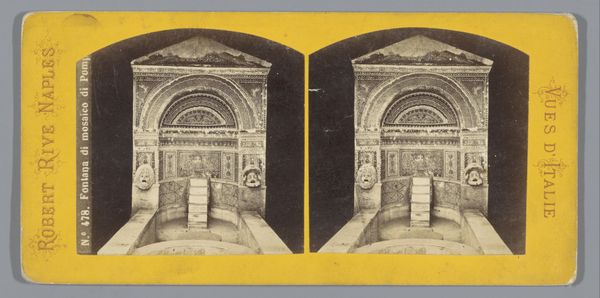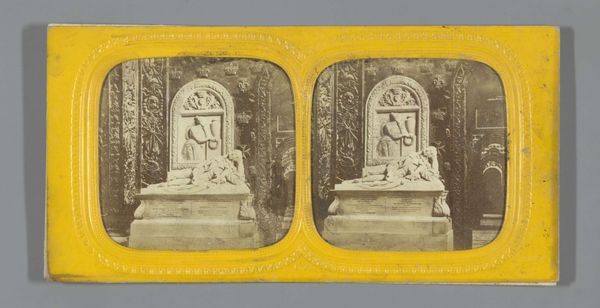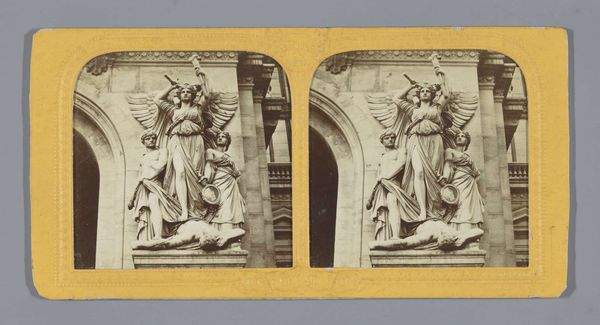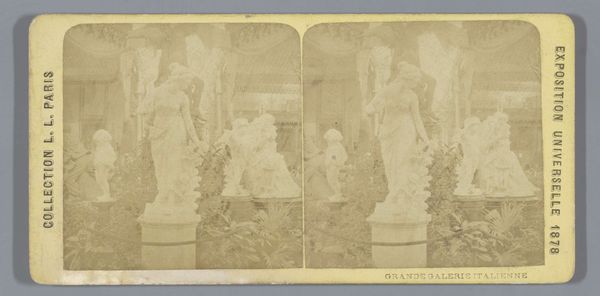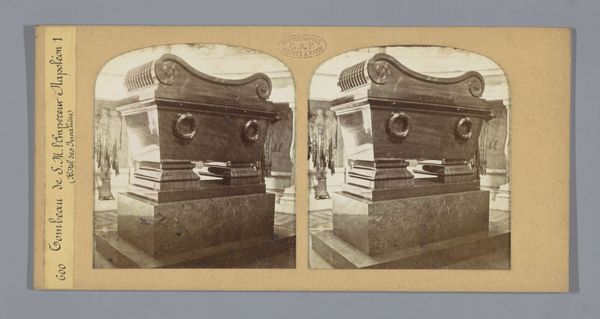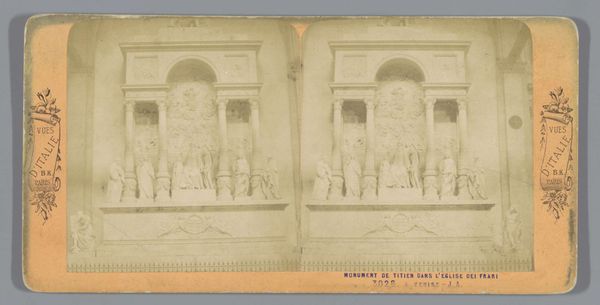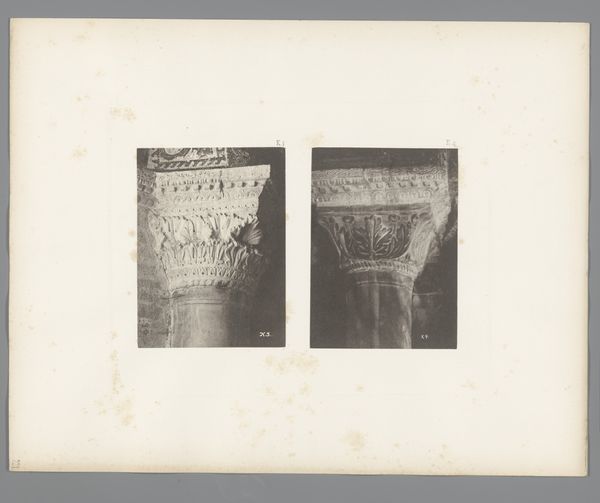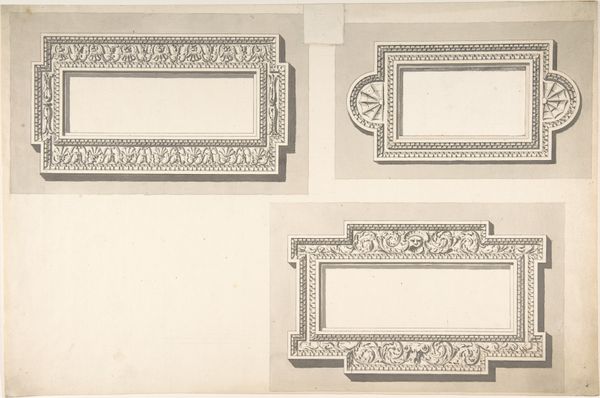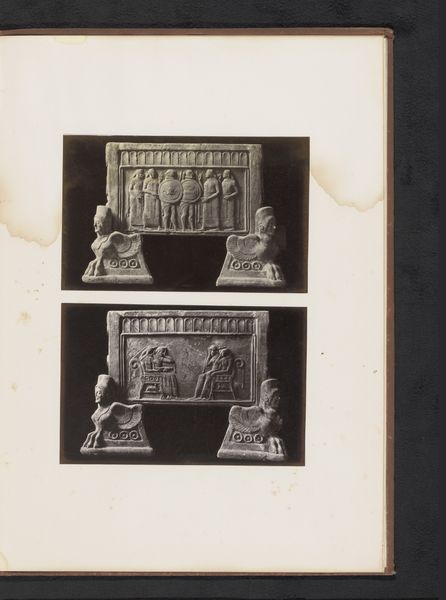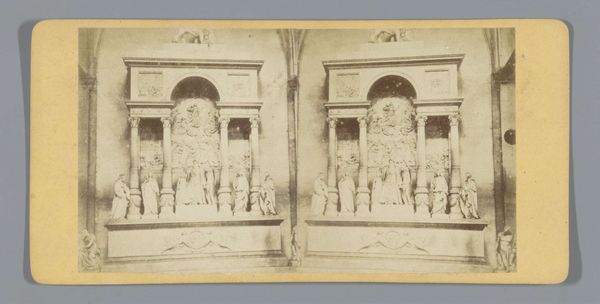
print, photography, sculpture
#
portrait
# print
#
greek-and-roman-art
#
photography
#
coloured pencil
#
sculpture
#
decorative-art
Dimensions: height 87 mm, width 177 mm
Copyright: Rijks Museum: Open Domain
Curator: This striking stereograph captures a sarcophagus, decorated with guirlandes and women's heads, dating back to somewhere between 1860 and 1880. Editor: The crisp details emerging from this photographic print convey a rather haunting monumentality, even at this small scale. There is an unsettlingly compelling symmetry. Curator: Absolutely. Consider the labor involved in its creation. The photograph itself signifies a shift in accessing and consuming artifacts. This print allows mass consumption of a traditionally exclusive cultural object, making the artifact and its artistic message accessible to a wider audience. Editor: It certainly underscores shifts in reproduction, but let's focus on its visual construction. The juxtaposition of human figures and floral motifs is carefully rendered, creating a rhythm across the facade. There is the tension between the rigid architecture of the sarcophagus and the fluidity of these garlands and female busts. Curator: That juxtaposition also reveals much about societal values. Note that the neoclassical aesthetic present would certainly signal sophistication, power, and aspiration for European social elites consuming art and culture in the mid-19th century. Editor: Yes, the neoclassical style evokes a sense of timelessness, an echo of past empires, with the symmetry providing an eternal stasis. And consider how the shadows define form—a classical application—to generate spatial complexity from very simple geometric relationships. Curator: It is truly amazing to me how something mass produced through a process reflects social and class mobility in such a clear visual statement. This allows scholars to deconstruct ideologies prevalent at the time around beauty, consumption and artistry. Editor: In this case, an exercise in understanding structure highlights not only aesthetics but historical perception—and even photography itself as an important medium worthy of analysis and preservation in an art historical context.
Comments
No comments
Be the first to comment and join the conversation on the ultimate creative platform.
